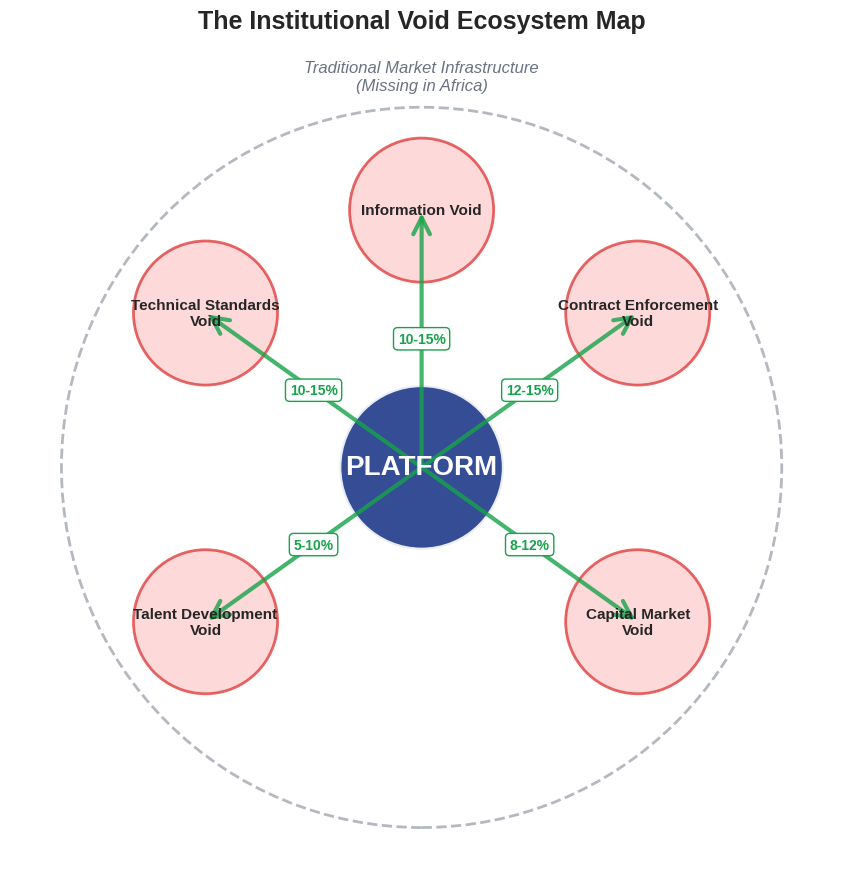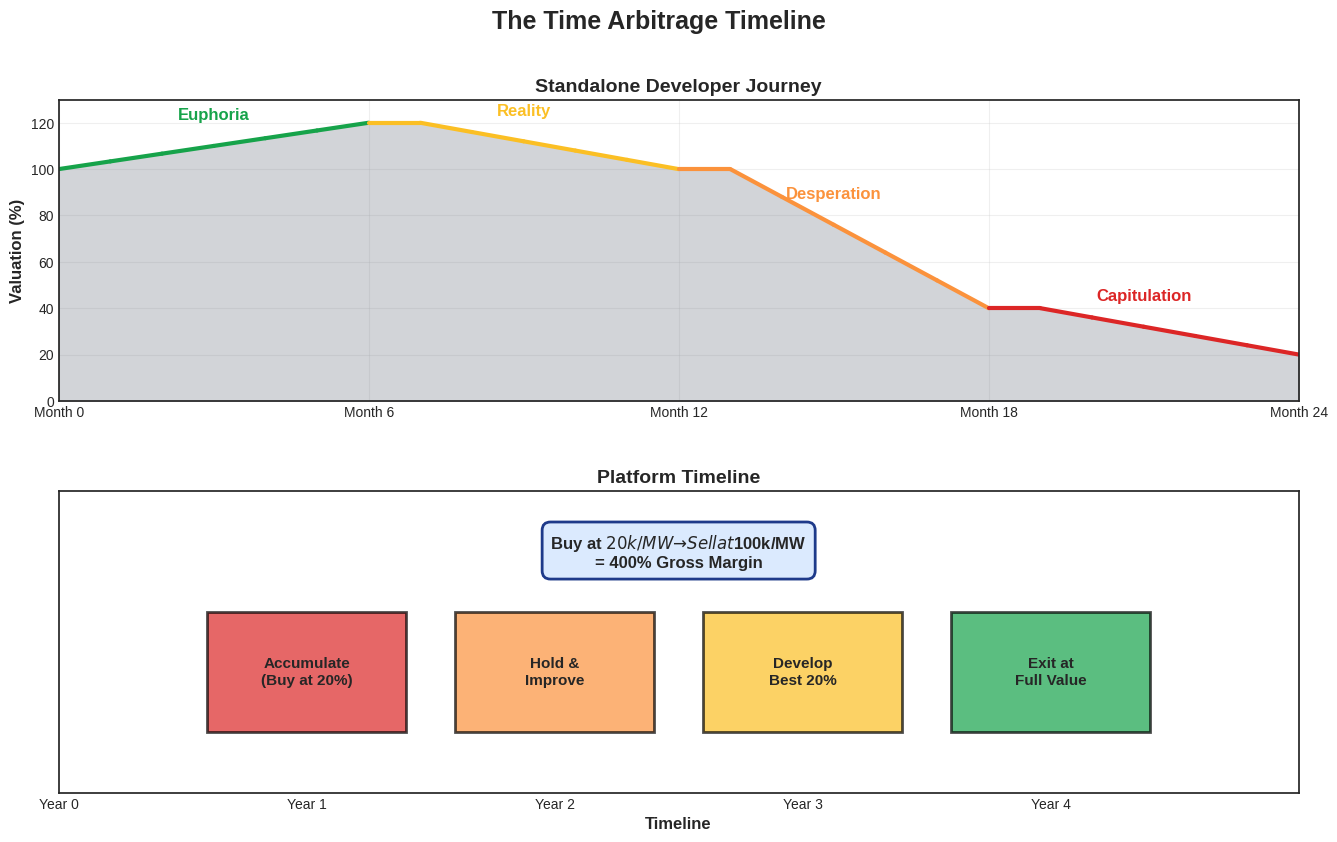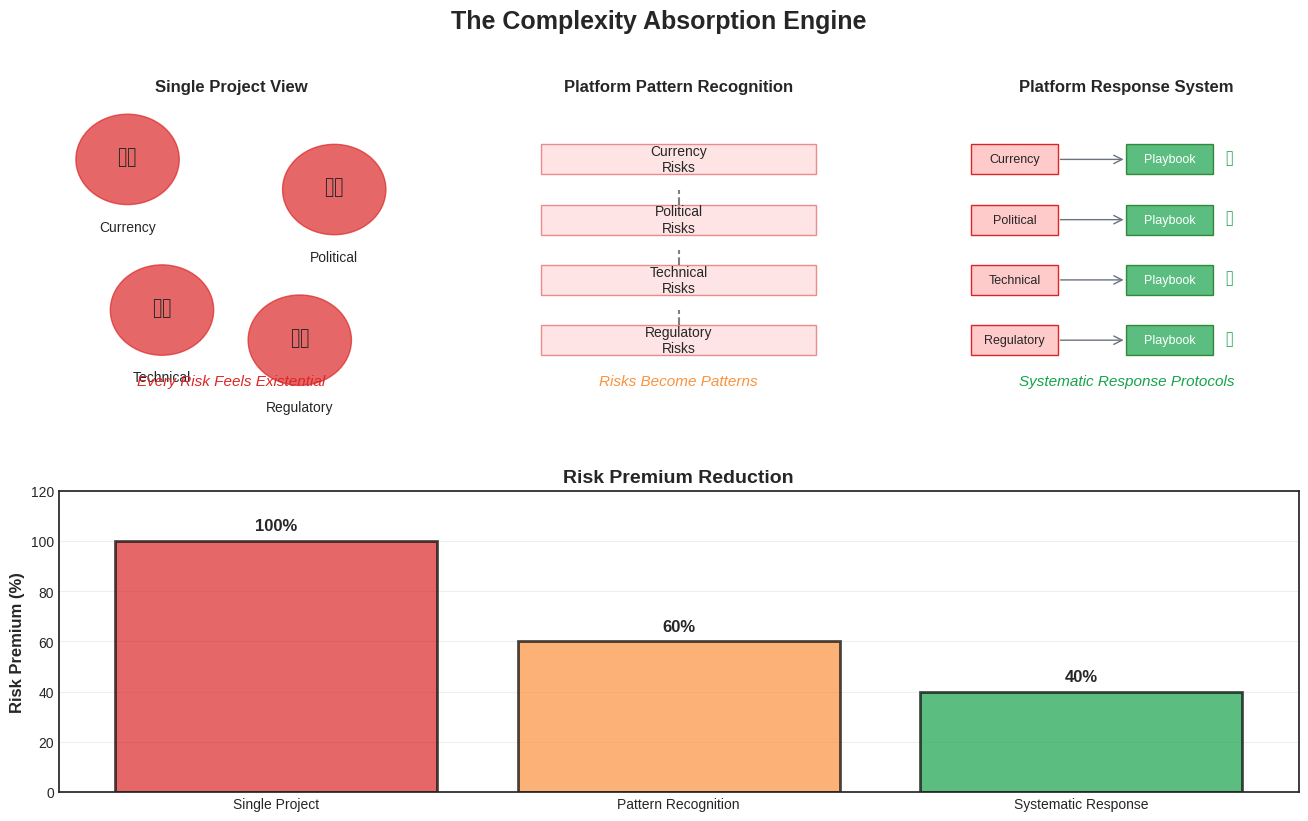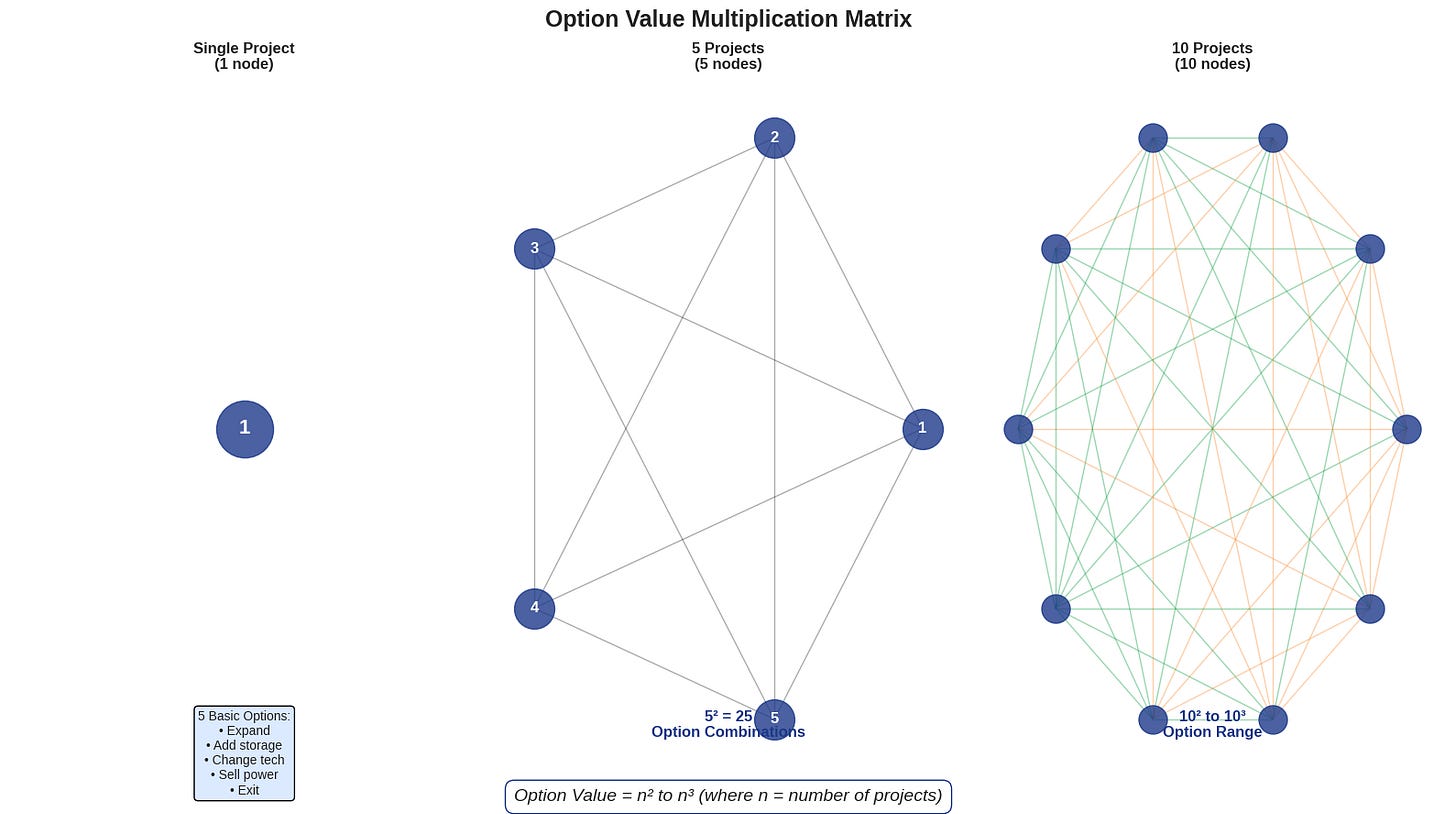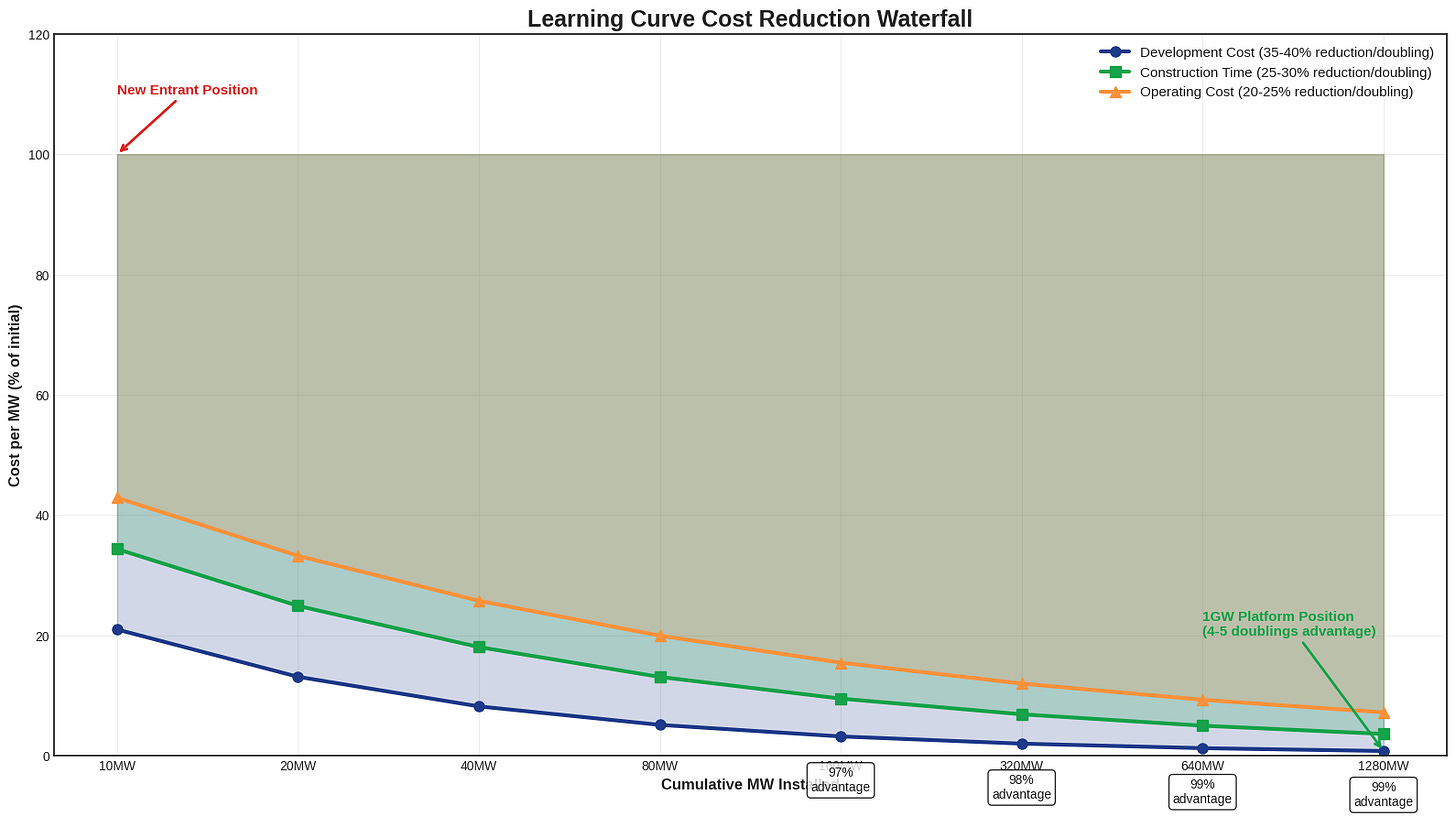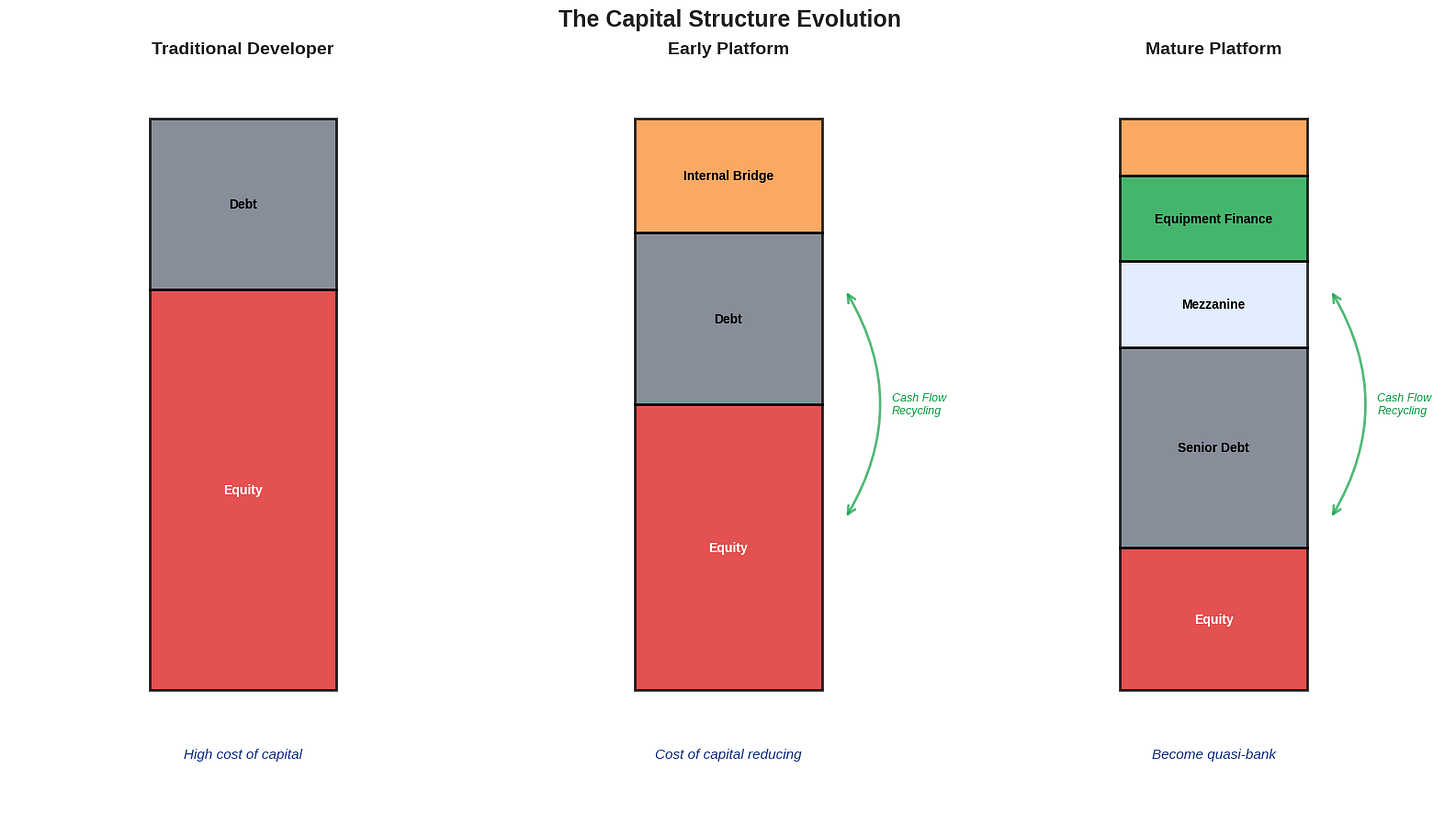The Platform Thesis: Why African Energy Infrastructure Needs a New Valuation Paradigm
The Art of Pricing Tomorrow's Monopolies Today
The infrastructure investment world has a platform fetish. Brookfield drops €6.1 billion on Neoen for 8GW operating and 20GW of pipeline¹. TPG backs Intersect Power². BlackRock commits $500 million to Recurrent Energy's 26GW pipeline³.
But here's what most are not saying out loud: African platforms operate under completely different physics than their developed market counterparts. The valuation models designed for predictable OECD markets break down catastrophically when applied to African realities.
The Fundamental Disconnect: Why Platforms ≠ Aggregated Projects
Traditional platform theory says value comes from:
Economies of scale
Portfolio diversification
Operational synergies
Development expertise
This works in Silicon Valley. In Africa, platform value comes from solving three intractable problems:
1. The Institutional Void Navigation Premium: Platforms don't just develop projects—they become quasi-governmental institutions filling voids in market infrastructure.
2. The Time Arbitrage Engine: While developers race against cliff dates, platforms weaponize time as a competitive advantage.
3. The Complexity Absorption Capability: Platforms transform unknowable risks into manageable probabilities through sheer portfolio mass.
Let me explain why these create 10x more value than traditional synergies.
The Institutional Void Theory of Platform Value
Harvard professors Khanna and Palepu coined "institutional voids"—gaps in market infrastructure that increase transaction costs. African energy markets aren't just experiencing voids; they're mostly void with occasional islands of institution.
Platforms fill five critical voids:
1. The Information Void
The Problem: No centralized data on energy demand, grid capacity, or creditworthiness.
Platform Solution: A large platform operating across 22 countries becomes a living database of:
Actual industrial energy consumption patterns
Real payment behaviors by sector
True grid stability by region
Valuation Impact: Information asymmetry worth 20-30% premium. Platforms with 5+ years operating history have data competitors would need a decade to replicate.
2. The Contract Enforcement Void
The Problem: Legal systems that take 5-7 years to resolve commercial disputes.
Platform Solution: Reputation capital that makes contract breach economically irrational.
When you owe one project money, you have leverage. When you owe a platform with 50 projects money, they have leverage. MIGA's $495 million guarantee to CBE isn't just risk mitigation—it's creating a parallel enforcement mechanism.
Valuation Impact: 15-25% reduction in cost of capital versus standalone projects.
3. The Capital Market Void
The Problem: Local banks think 5 years is long-term. International banks think $50 million is too small.
Platform Solution: Become the bank.
Platforms increasingly provide:
Bridge financing to developers
Working capital to EPCs
Payment terms to equipment suppliers
Valuation Impact: Financial services arms worth 0.5-1x the infrastructure business.
4. The Talent Development Void
The Problem: Universities don't teach project finance. International talent doesn't understand local dynamics.
Platform Solution: In-house academies.
Leading platforms spend 5-10% of OpEx on training. They're not buying talent—they're manufacturing it.
Valuation Impact: Each fully-trained project manager worth $2-5 million in enterprise value.
5. The Technical Standards Void
The Problem: No local standards for renewable energy. International standards ignore local conditions.
Platform Solution: Become the de facto regulator.
Platform technical standards become market standards. Their procurement specs become industry requirements. Their HSE protocols become regulatory benchmarks.
Valuation Impact: Standard-setting platforms command 30-50% acquisition premiums.
The Time Arbitrage Model
In Africa, pipelines are time machines.
Here's the arbitrage:
The Patience Premium
Standalone Developer Timeline:
Month 1-6: Euphoria ("This project will transform everything!")
Month 7-12: Reality ("Why does permitting take so long?")
Month 13-18: Desperation ("We need capital NOW")
Month 19-24: Capitulation (Sell for 20% of initial valuation)
Platform Timeline:
Year 1: Accumulate distressed projects at 20 cents on the dollar
Year 2: Hold and improve
Year 3: Develop best 20%
Year 4: Sell or build at full value
The Math: Buy distressed at $20k/MW, develop to RTB at $100k/MW. 400% gross margin.
The Portfolio Time Shifting
Platforms practice temporal arbitrage across their portfolio:
Revenue Time Shifting:
Use operating asset cash flows to fund development
Eliminates J-curve, creates immediate yield
Worth 10-15% valuation premium
Risk Time Shifting:
Start 5x more projects than needed
Kill poor performers early
Survivors have 80%+ success rate
De-risks entire portfolio
Capital Time Shifting:
Raise capital in good windows
Deploy during distress
2-3x better returns than market-timed investing
The Complexity Absorption Engine
African energy markets aren't complicated—they're complex. Complicated systems have many parts but predictable interactions. Complex systems have emergent behaviors that can't be predicted from individual components.
Platforms convert complexity into complication through three mechanisms:
1. The Pattern Recognition Algorithm
Single Project: Every risk feels existential
Platform with 100 projects: Risks become patterns
Example: Currency devaluation
Project response: Panic, renegotiate PPA
Platform response: "This is our 6th devaluation. Here's the playbook."
Valuation Impact: 40-60% lower risk premium in DCF models.
2. The Optionality Maximizer
Each project creates options:
Expand capacity
Add storage
Sell to grid vs. private off-taker
Develop adjacent land
Option Value Formula:
The interaction term is non-linear. 10 projects don't create 10x the options—they create 10² or 10³ options.
3. The Learning Curve Accelerator
Boston Consulting Group documented 20-30% cost reduction for each doubling of cumulative production in manufacturing. In African renewable platforms:
Cost Reduction per Doubling:
Development cost: 35-40%
Construction time: 25-30%
Operating cost: 20-25%
A platform at 1GW installed has 4-5 doublings advantage over new entrants.
The New Valuation Framework: Platform Value Stack
Forget DCF. Here's how to value African platforms:
Layer 1: Infrastructure Foundation Value
Traditional operating asset valuation. The boring part.
Layer 2: Institutional Premium
For each void filled:
Information systems: +5-10%
Contract enforcement: +5-10%
Capital provision: +10-15%
Talent development: +5-10%
Technical standards: +10-15%
Total possible: +45-70% over asset value
Layer 3: Time Arbitrage Value
Calculate NPV of:
Distressed acquisition opportunities
Patient capital deployment
Portfolio optimization
Typically: +20-40% over asset value
Layer 4: Complexity Management Value
Value of:
Lower risk premiums
Option creation
Learning curve position
Range: +30-60% over asset value
Layer 5: Strategic Control Value
Platform as:
Market maker
Standard setter
Consolidator
Gatekeeper
Premium: +50-100% for market leaders
Total Platform Multiple: 2.5-4x infrastructure asset value
What Kills Platform Value
1. The Complexity Trap
Platforms operating in 20+ countries often discover complexity costs scale exponentially while benefits scale linearly. Optimal size: 8-12 countries with cultural/regulatory similarities.
2. The Talent Leakage
Train someone for 3 years, they leave in year 4. Without golden handcuffs, platforms become talent exporters. Solution: Equity participation down to project manager level.
3. The Success Paradox
Successful platforms attract government attention. Suddenly you're "too profitable" or "too foreign." Political risk INCREASES with success.
4. The Integration Illusion
Acquiring 10 developers doesn't create 1 platform. Integration costs typically 2x acquisition price and fails 60% of the time.
The Platform Endgame: Three Futures
Scenario 1: The Utility Evolution (40% probability)
Platforms become de facto utilities. Governments nationalize or regulate. Returns compress to utility levels (8-12%). Timeline: 5-10 years.
Scenario 2: The Super-Platform Emergence (35% probability)
3-5 continental champions emerge. $10-20 billion valuations. African energy becomes investible at scale. Timeline: 3-7 years.
Scenario 3: The Fragmentation Continuation (25% probability)
Market remains fragmented. Platforms stay subscale. Returns stay high but capital access remains limited. Timeline: Indefinite.
The Investment Implications
For Investors:
Stop modeling African platforms like OECD infrastructure
Value institutional void filling, not just synergies
Price in political success risk, not just failure risk
Demand equity retention for key talent
For Platforms:
Focus on depth (institutional void filling) over breadth (geographic expansion)
Build talent retention into DNA
Prepare for utility-style regulation
Create options, not just projects
For Governments:
Platforms are solving your infrastructure problems
Partner, don't prey
Regulate outputs, not returns
Learn from platform standards
The Conclusion: Platforms as Nation Builders
The Brookfield-Neoen deal valued pipeline at €200-300/kW for early stage projects. In Africa, leading platforms will achieve similar valuations not through pipeline dreams but through institutional reality.
They're not just building power plants. They're building the market infrastructure that makes power plants possible. They're creating the standards, training the talent, providing the capital, and absorbing the complexity that transforms impossible projects into inevitable infrastructure.
Value them not as aggregators of projects but as architects of markets. The premium isn't for what they own—it's for what they enable.
Current platform valuations assume they're competing with other developers. The reality? They're competing with multilateral development banks, government agencies, and technical universities for the role of market builder.
The winners will be valued like institutions, not investments. Plan accordingly.
—S
References
Infrastructure Investor. (2024, October 1). "Pipelines or pipe dreams? Valuing renewables platforms." Infrastructure Investor. https://www.infrastructureinvestor.com/pipelines-or-pipe-dreams-valuing-renewables-platforms/
TPG. (2023, September 15). "TPG Rise Climate Backs Intersect Power in $750 Million Growth Investment." TPG Press Release. https://www.intersectpower.com/intersect-power-announces-750m-growth-equity-investment-from-tpg-rise-climate-cai-investments-trilantic-energy-partners-north-america/
BlackRock. (2024, March 22). "BlackRock Real Assets Commits $500 Million to Recurrent Energy's Solar Pipeline." BlackRock Newsroom. https://recurrentenergy.com/blackrock-commits-500m-to-energy-storage-and-solar-project-developer-recurrent-energy/
Phoenix Strategy Group. (2025, January). "Key Valuation Multiples in Renewable Energy Deals: Q4 2024 Update." Phoenix Strategy Group Research. https://www.phoenixstrategy.group/blog/key-valuation-multiples-in-renewable-energy-deals
Apricum Group. (2020, October 19). "Taking part in the growing corporate M&A sector for renewables: Key valuation approaches explained." Apricum - The Cleantech Advisory. https://apricum-group.com/taking-part-in-the-growing-corporate-ma-sector-for-renewables/
Hodge, L. (2019, March-April). "How to Value a Solar Development Pipeline, Parts 1-4." Greentech Media. https://www.greentechmedia.com/articles/read/how-to-value-a-solar-development-pipeline-part-4
Khanna, T., & Palepu, K. (1997). "Why focused strategies may be wrong for emerging markets." Harvard Business Review, 75(4), 41-51. https://hbr.org/1997/07/why-focused-strategies-may-be-wrong-for-emerging-markets
Lawrence Berkeley National Laboratory. (2024, April). "Queued Up: Characteristics of Power Plants Seeking Transmission Interconnection As of the End of 2023." Berkeley Lab. https://emp.lbl.gov/publications/queued-characteristics-power-plants
Khanna, T., & Palepu, K. (2010). Winning in Emerging Markets: A Road Map for Strategy and Execution. Harvard Business Press. ISBN: 978-1-4221-6663-5
CrossBoundary Energy. (2025, June). "CrossBoundary Energy Portfolio Overview: 22 Countries, 276 MW, 211 MWh Storage." Company Presentation. https://crossboundaryenergy.com/
Multilateral Investment Guarantee Agency. (2025, July 14). "MIGA to Support Over 100 Energy Projects in up to 20 African Countries." MIGA Press Release. https://www.miga.org/press-release/miga-support-over-100-energy-projects-20-african-countries
Hull, J. C. (2022). Options, Futures, and Other Derivatives (11th ed.). Pearson. Chapter 22: "Real Options." ISBN: 978-0-13-693997-2
Bain & Company. https://www.bain.com/insights/topics/m-and-a-report/
McKinsey & Company. (2024). "M&A Trends in 2024." McKinsey on M&A. https://www.mckinsey.com/capabilities/m-and-a/our-insights/top-m-and-a-trends-in-2024-blueprint-for-success-in-the-next-wave-of-deals
Lazard. (2024, October). "Lazard's Levelized Cost of Energy Analysis—Version 17.0." Lazard Insights. https://www.lazard.com/media/xemfey0k/lazards-lcoeplus-june-2024-_vf.pdf
CrossBoundary Energy. (2025, March 5). "CrossBoundary Energy Receives $45m Investment from EAAIF." https://www.africaglobalfunds.com/news/private-equity/deals/eaaif-invests-45m-in-crossboundary-energy/
Impact Investor. (2025, June 26). "Octopus Energy Generation launches $250m African clean energy fund." https://www.impact-investor.com/octopus-energy-generation-launches-250m-african-clean-energy-fund/
Global Solar Council. (2025). "Africa Market Outlook for Solar PV 2025-2028." GSC Publications. https://www.globalsolarcouncil.org/resources/africa-market-outlook-for-solar-pv-2025-2028/
Ecofin Agency. (2025, February 13). "African Tech Startup M&A Activity Grows 34% in 2024 (Report)." https://www.ecofinagency.com/finance/1702-46427-african-tech-startup-m-a-activity-grows-34-in-2024-report
Sustainable Tech Partner. (2024, February 2). "M&A: 70 Sustainable Technology & Renewable Energy Buyers, Sellers, Investors for January 2024." https://sustainabletechpartner.com/topics/ma/70-sustainable-technology-renewable-energy-buyers-sellers-investors-for-january-2024/
Disclaimer:
Look, we need to have a talk. The uncomfortable kind where I tell you that despite spending the last 3,000 words sounding like I know what I'm talking about, I definitely don't know what I'm talking about. At least not in any way that should influence you to wire money to anyone based on my ramblings.
Nothing here constitutes investment advice, financial advice, or any kind of advice that involves actual money changing hands.
Remember that bit about checking my math? I wasn't being cute. The point is: verify everything. Trust nothing. Especially the formulas.
Some numbers in this post are composites, averages, or educated guesses based on deals I've seen. I've anonymized everything more thoroughly than a witness protection program. If you think you recognize your deal, you don't. If you're sure you do, you still don't.
References to specific companies, platforms, or transactions do not constitute endorsement or recommendation. All company names and trademarks are the property of their respective owners.
Before you do anything based on this blog, talk to actual professionals. The kind with licenses, insurance, and offices that aren't coffee shops. They charge money because they actually know things, unlike your humble blogger who just pattern-matches.
Every model in this post is simplified. Real valuations require real work, not blog-post approximations. My frameworks are starting points, not ending points.
The "Copyright But Not Really" Notice: © 2025 The Impostor's Guide to Clean Energy. Feel free to share, quote, or mock this content. Just don't blame me when your investment committee asks hard questions about where you got these ideas.
I write under a pseudonym because I'm either protecting my identity or admitting I'm not qualified to use my real name. You decide which. Either way, form your own opinions.
This blog exists because I learn by writing, not because I know by knowing. If my confusion helps your clarity, we both win. If my confusion increases your confusion, at least we're confused together.
For corrections, complaints, or commiseration: kaykluz@yahoo.com
Remember: In renewable energy, as in life, the only guarantee is that there are no guarantees. Except circular references. Those are guaranteed.
Last updated: When I remembered to update it
Next update: When I remember to update it again


